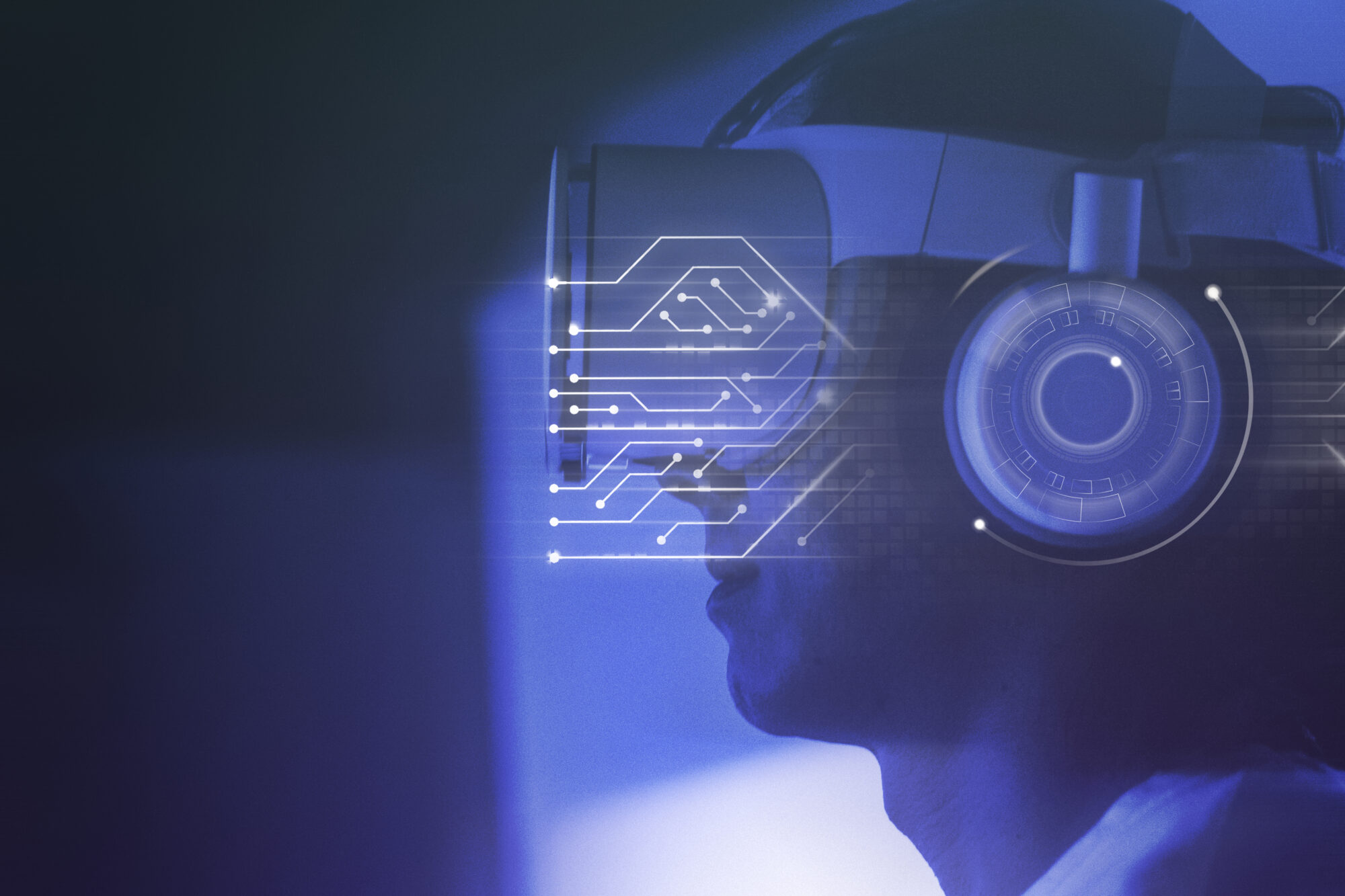AR and VR in education
Augmented Reality (AR) and Virtual Reality (VR) are innovative technologies that have the potential to revolutionize the way we teach and learn. AR overlays digital information in the real world, enriching the user’s perception and interaction with the real environment. On the other hand, VR immerses users in a fully virtual environment, offering the ability to interact with this artificial world in real-time. These technologies, often clubbed under the umbrella term of ‘immersive technologies’, have started to carve a significant niche within the education sector.
Education is no stranger to technology. Over the years, we’ve seen everything from blackboards to overhead projectors to smart screens transforming classrooms. Today, in the age of digital transformation, we’re seeing an exciting new wave of technological innovation in education. Virtual Reality and Augmented Reality are at the forefront of this revolution, offering immersive, engaging, and effective ways to teach and learn that significantly improve upon traditional methods.
Understanding virtual reality in education
Virtual Reality in education refers to the use of VR technology to create a simulated environment for teaching and learning. This immersive technology enables students to interact with the 3D world, hence providing a ‘real’ experience within a ‘virtual’ environment. Examples of VR in education include virtual field trips, immersive games for learning, and simulations for training in various subjects like medicine and engineering.
The utilization of VR in education comes with numerous benefits. It allows for experiential learning, where students can immerse themselves in any environment, historical era, or even within the human body, making the learning experience far more engaging and memorable. Furthermore, VR creates a safe environment for risk-free practical training, such as in medical or technical education.
Numerous case studies have shown the transformative impact of VR on education. For instance, Stanford University’s Virtual Human Interaction Lab explores how VR can affect learning and empathy. Meanwhile, companies like Google have introduced VR in the form of Google Expeditions, allowing students to take virtual field trips to a myriad of locations worldwide, thereby extending their learning beyond classroom walls.
Understanding augmented reality in education
Augmented Reality (AR) is a technology that superimposes digital information like images, sounds, or text onto the real world, enhancing the user’s perception and interaction with their environment. Examples of AR in education range from interactive textbooks that bring learning material to life, to AR apps that allow students to explore complex concepts like anatomy or molecular structures in 3D.
The application of AR in education offers several advantages. It provides an interactive learning experience, enhancing student engagement and motivation. Additionally, AR can make complex information more understandable and fosters collaborative learning as students can share their AR experiences with others.
Multiple case studies demonstrate AR’s potential in education. For instance, the University of Helsinki has used AR to teach chemistry, allowing students to interact with virtual molecules in the real world. Similarly, apps like Aurasma are being used in classrooms to transform passive learning materials into active, interactive experiences.
Comparing AR and VR in education
AR and VR are both powerful tools that have significantly transformed education. While they share some common elements, such as providing immersive experiences, there are notable differences. AR enhances real-world environments by adding digital elements, thus keeping learners in their physical reality, while VR creates a completely new reality, immersing the learners in a different environment altogether.
Each technology comes with unique benefits and challenges. VR provides an entirely immersive experience, offering learners the ability to interact within simulated environments. This makes it particularly useful for teaching subjects where real-world experiences are challenging or impossible to create. On the other hand, AR doesn’t require full immersion, allowing learners to stay connected to their physical surroundings. This offers a unique benefit for collaborative learning experiences.
Augmented Reality offers an array of advantages in the education sector that can revolutionize the way learning and teaching processes are conducted. Here are some notable benefits:
Interactive learning
AR encourages interactive learning by blending digital components into the physical world. This integration provides students with the ability to explore and interact with the subject matter, thus fostering an active learning environment. For instance, students can explore 3D models of biological systems, buildings, or historical artifacts in their classrooms, making the learning experience more engaging.

presentation to try
Nsflow in action
Simplified complex concepts
AR helps in breaking down complex subjects by offering visual and tangible representations. For instance, it can be used to illustrate complex scientific phenomena, like the solar system’s functioning or a molecule’s structure, through interactive 3D models. This approach aids in easier understanding and better retention of information.
Enhancing creativity and imagination
By adding digital information to the real world, AR can stimulate students’ creativity and imagination. It allows learners to visualize abstract concepts, thus fostering a deeper understanding and inspiring innovative thinking.
Collaborative learning
AR fosters collaborative learning experiences as it can be easily integrated into group tasks. This is particularly beneficial in scenarios where team-based problem-solving and creativity are crucial. Multiple users can interact with the same AR content, promoting discussion, collaboration, and critical thinking.
Accessibility and affordability
AR can be easily accessed through smartphones and tablets, making it a cost-effective solution for educational institutions. This widespread accessibility can democratize access to high-quality educational materials, making learning more inclusive.
Real-time feedback
AR can provide immediate, real-time feedback, enabling students to understand their mistakes and learn from them immediately. This feature is particularly helpful in practical training, where instant feedback can drastically improve the learning curve.
Increased motivation
By making learning fun and exciting, AR can increase students’ motivation and engagement. Gamified learning experiences using AR can create a more enjoyable environment, thereby promoting a positive attitude towards learning.
Customizable learning experiences
AR allows for personalized learning experiences tailored to each student’s needs. Learning materials can be adapted based on a student’s progress, helping to cater to different learning styles and paces.
In summary, AR in education can enhance the learning experience by making it more interactive, engaging, and meaningful. It holds the potential to transform traditional teaching methods and set the stage for a more immersive and effective educational framework.
Comparing their effectiveness in specific scenarios, both AR and VR provide unique learning opportunities. For instance, VR can provide immersive experiences of historical events or places, making history lessons more engaging. On the other hand, AR can superimpose complex scientific data onto the real world, aiding in the understanding of complex concepts.
These technologies have also gained significant traction among educators and learners due to their potential to create immersive learning experiences. For instance, VR is utilized in language learning, enabling students to practice language skills in virtual settings. AR, on the other hand, is used in science education to visualize and interact with 3D models of scientific concepts.
As AR and VR technologies continue to evolve, they will undoubtedly play an increasingly significant role in shaping the future of education. Not only will they make learning more engaging and fun, but they will also revolutionize the way we teach, making education more accessible, interactive, and effective.
The takeaway
AR and VR offer unparalleled opportunities to enrich educational experiences. These technologies have shown potential to enhance learner engagement, improve understanding, and create immersive environments that promote experiential learning.
As we continue to explore and understand the potential of these technologies, it’s clear that the future of education will be more interactive, personalized, and engaging. While challenges remain, the prospects are exciting, and the potential impact of AR and VR on education is profound.
As we move towards a future where learning is no longer confined to a physical classroom or bound by geographical constraints, the marriage of education and immersive technologies like AR and VR becomes a promising avenue worth exploring and investing in.



















